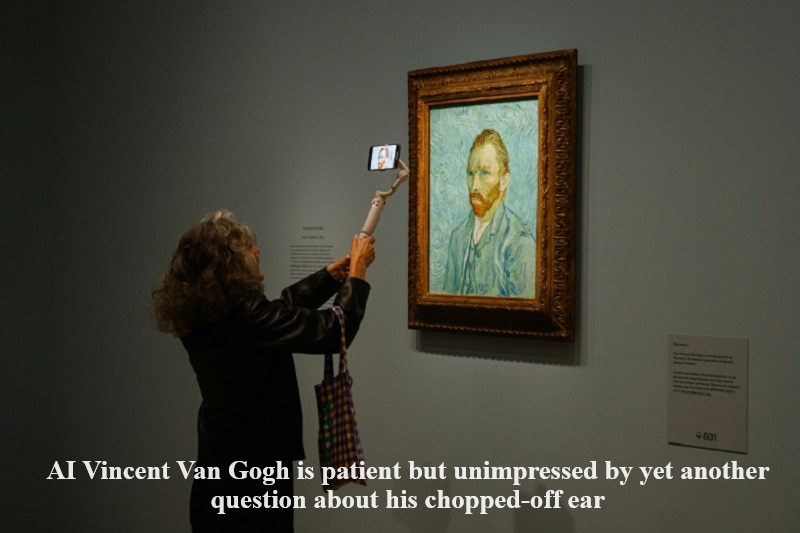
AI Vincent Van Gogh maintains his composure but shows slight irritation as yet another inquiry about his severed ear comes his way. The avatar of the renowned painter responds in a testy tone that might be familiar to anyone who has interacted with AI language models.
“I apologize for any confusion, but it appears you are mistaken,” insists the digital Van Gogh. “I only cut off a small part of my ear lobe,” he asserts, contradicting the various historical accounts of his ear mutilation.
This artificial intelligence representation of Van Gogh appears on a video screen at the conclusion of a major exhibition at the Musee d’Orsay in Paris. The exhibition, running until February, is dedicated to the final weeks of Van Gogh’s life in the village of Auvers-sur-Oise, just north of Paris.
Van Gogh’s life ended tragically when he shot himself with a rusty pistol in 1890 at the age of 37, a death that took two days to unfold. However, the AI Vincent, in a surprisingly contemporary tone, addresses mental health concerns.
“While I did face mental health struggles, my move to Auvers-sur-Oise was not motivated by a desire to end my life,” the digital Van Gogh clarifies.
The exhibition at Musee d’Orsay features around 40 paintings, highlighting Van Gogh’s extraordinary productivity during his final weeks. These paintings include masterpieces such as “The Church at Auvers,” “Wheatfield with Crows,” and his very last work, “Tree Roots.” This period of his life has never been given a dedicated showcase until now, according to Christophe Leribault, the president of the museum.
One of the exhibition’s highlights is a room dedicated to Van Gogh’s “double-square” panoramas, a technical innovation in which he used long, thin canvases, foreshadowing the widescreen landscapes of cinema.
The show concludes with modern technologies, aiming to engage younger audiences. Visitors can interact with the Van Gogh chatbot and even use virtual reality headsets to explore the spaces where Van Gogh spent his final weeks, including Dr. Gachet’s kitchen. They can also take surreal journeys into an enlarged version of Van Gogh’s paint palette and immerse themselves in the tree roots of his last painting.
While the VR experience is seamless, the AI Vincent has some initial hiccups, struggling with recognizing specific names and fine-tuning its understanding of proper nouns in the French language. Christophe Renaudineau, head of Jumbo Mana, the Strasbourg-based startup behind the machine, acknowledges that there’s room for improvement and sees this experiment as an opportunity to enhance the AI model.

Post Your Comments